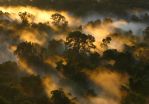(Press-News.org) BLOOMINGTON, Ind. -- An Indiana University cognitive scientist and collaborators have found that posture is critical in the early stages of acquiring new knowledge.
The study, conducted by Linda Smith, a professor in the IU Bloomington College of Arts and Sciences' Department of Psychological and Brain Sciences, in collaboration with a roboticist from England and a developmental psychologist from the University of Wisconsin-Madison, offers a new approach to studying the way "objects of cognition," such as words or memories of physical objects, are tied to the position of the body.
"This study shows that the body plays a role in early object name learning, and how toddlers use the body's position in space to connect ideas," Smith said. "The creation of a robot model for infant learning has far-reaching implications for how the brains of young people work."
The research, "Posture Affects How Robots and Infants Map Words to Objects," was published today in PLOS ONE, an open-access, peer-reviewed online journal.
Using both robots and infants, researchers examined the role bodily position played in the brain's ability to "map" names to objects. They found that consistency of the body's posture and spatial relationship to an object as an object's name was shown and spoken aloud were critical to successfully connecting the name to the object.
The new insights stem from the field of epigenetic robotics, in which researchers are working to create robots that learn and develop like children, through interaction with their environment. Morse applied Smith's earlier research to creating a learning robot in which cognitive processes emerge from the physical constraints and capacities of its body.
"A number of studies suggest that memory is tightly tied to the location of an object," Smith said. "None, however, have shown that bodily position plays a role or that, if you shift your body, you could forget."
To reach these conclusions, the study's authors conducted a series of experiments, first with Morse's robots, which were programmed to map the name of an object to the object through shared association with a posture, then with children age 12 to 18 months.
In one experiment, a robot was first shown an object situated to its left, then a different object to the right; then the process was repeated several times to create an association between the objects and the robot's two postures. Then with no objects in place, the robot's view was directed to the location of the object on the left and given a command that elicited the same posture from the earlier viewing of the object. Then the two objects were presented in the same locations without naming, after which the two objects were presented in different locations as their names were repeated. This caused the robot to turn and reach toward the object now associated with the name.
The robot consistently indicated a connection between the object and its name during 20 repeats of the experiment. But in subsequent tests where the target and another object were placed in both locations -- so as to not be associated with a specific posture -- the robot failed to recognize the target object. When replicated with infants, there were only slight differences in the results: The infant data, like that of the robot, implicated the role of posture in connecting names to objects.
"These experiments may provide a new way to investigate the way cognition is connected to the body, as well as new evidence that mental entities, such as thoughts, words and representations of objects, which seem to have no spatial or bodily components, first take shape through spatial relationship of the body within the surrounding world," Smith said.
Smith's research has long focused on creating a framework for understanding cognition that differs from the traditional view, which separates physical actions such as handling objects or walking up a hill from cognitive actions such as learning language or playing chess.
Additional research is needed to determine whether this study's results apply to infants only, or more broadly to the relationship between the brain, the body and memory, she added. The study may also provide new approaches to research on developmental disorders in which difficulties with motor coordination and cognitive development are well-documented but poorly understood.
INFORMATION:
Study collaborators were Anthony Morse, a senior post-doctoral research fellow in the Centre for Robotics and Neural Systems at the University of Plymouth, and Viridiana Benitez, a post-doctoral research associate at the University of Wisconsin-Madison.
This research was supported with grants from the European Union (FP7 projects ITALK No. 214668), Poeticon++ (No. 288382), National Institutes of Child Health and Human Development (R21HD068475) and a National Science Foundation Graduate Research Fellowship.
For generations, students have been taught the concept of "ecological succession" with examples from the plant world, such as the progression over time of plant species that establish and grow following a forest fire. Indeed, succession is arguably plant ecology's most enduring scientific contribution, and its origins with early 20th-century plant ecologists have been uncontested. Yet, this common narrative may actually be false. As posited in an article published in the March 2015 issue of The Quarterly Review of Biology, two decades before plant scientists explored the ...
Tirat Carmel, Israel - March 19, 2015 - MeMed, Ltd., today announced publication of the results of a large multicenter prospective clinical study that validates the ability of its ImmunoXpert in-vitro diagnostic blood test to determine whether a patient has an acute bacterial or viral infection. The study enrolled more than 1,000 patients and is published in the March 18, 2015 online edition of PLOS ONE. Unlike most infectious disease diagnostics that rely on direct pathogen detection, MeMed's assay decodes the body's immune response to accurately characterize the cause ...
The most extensive land-based study of the Amazon to date reveals it is losing its capacity to absorb carbon from the atmosphere. From a peak of two billion tonnes of carbon dioxide each year in the 1990s, the net uptake by the forest has halved and is now for the first time being overtaken by fossil fuel emissions in Latin America.
The results of this monumental 30-year survey of the South American rainforest, which involved an international team of almost 100 researchers and was led by the University of Leeds, are published today in the journal Nature.
Over recent ...
Messenger RNAs (mRNA) are linear molecules that contain instructions for producing the proteins that keep living cells functioning. A new study by UCL researchers has shown how the three-dimensional structures of mRNAs determine their stability and efficiency inside cells. This new knowledge could help to explain how seemingly minor mutations that alter mRNA structure might cause things to go wrong in neurodegenerative diseases like Alzheimer's.
mRNAs carry genetic information from DNA to be translated into proteins. They are generated as long chains of molecules, but ...
Many people in the UK feel a strong sense of regional identity, and it now appears that there may be a scientific basis to this feeling, according to a landmark new study into the genetic makeup of the British Isles.
An international team, led by researchers from the University of Oxford, UCL (University College London) and the Murdoch Childrens Research Institute in Australia, used DNA samples collected from more than 2,000 people to create the first fine-scale genetic map of any country in the world.
Their findings, published in Nature, show that prior to the mass ...
DURHAM, N.C. -- Each year, rice in Asia faces a big threat from a sesame seed-sized insect called the brown planthopper. Now, a study reveals the molecular switch that enables some planthoppers to develop short wings and others long -- a major factor in their ability to invade new rice fields.
The findings will appear Mar. 18 in the journal Nature.
Lodged in the stalks of rice plants, planthoppers use their sucking mouthparts to siphon sap. Eventually the plants turn yellow and dry up, a condition called "hopper burn."
Each year, planthopper outbreaks destroy hundreds ...
Researchers have linked antibiotic resistance with poor governance and corruption around the world.
Lead researcher Professor Peter Collignon from The Australian National University (ANU) School of Medicine said the increase in antibiotic-resistant infections was one of the greatest threats facing modern medicine.
In the United States alone, around 23,000 deaths and two million illnesses each year have been attributed to antibiotic-resistant bacteria.
"We found poor governance and higher levels of corruption are associated with higher levels of antibiotic resistance," ...
COLUMBUS, Ohio - Cardiovascular researchers at The Ohio State University Wexner Medical Center have shown that a protein known as MG53 is not only present in kidney cells, but necessary for the organ to repair itself after acute injury. Results from this animal model study are published in the journal Science Translational Medicine.
Previous work by Jianjie Ma, a professor and researcher in Ohio State's Department of Surgery and the Dorothy M. Davis Heart & Lung Research Institute, identified and proved that MG53 repairs heart, lung and skeletal muscle cells as well.
"MG53 ...
Although bike-sharing systems have attracted considerable attention, they are falling short of their potential to transform urban transportation.
A new study by University of Chicago Booth School of Business Assistant Professor Elena Belavina, INSEAD Professor of Sustainable Development Karan Girotra and INSEAD Ph.D. candidate Ashish Kabra found that it is possible for cities to increase ridership without spending more money on bikes or docking points -- simply by redesigning the network.
The researchers spent four months in Paris observing the Velib' bike-share system ...
While doctors almost always agree on a pathological diagnosis of invasive breast cancer, there is room for improvement when diagnosing atypia (or atypical ductal hyperplasia-ADH) and DCIS (ductal carcinoma in-situ), Anna Tosteson, ScD and Tracy Onega, PhD from Dartmouth-Hitchcock's Norris Cotton Cancer Center have found. The Dartmouth investigators, and national collaborators, published the study, "Diagnostic Concordance Among Pathologists Interpreting Breast Biopsy Specimens," today in JAMA.
"About 1.6 million breast biopsies are done every year in the U.S., yet in nearly ...



